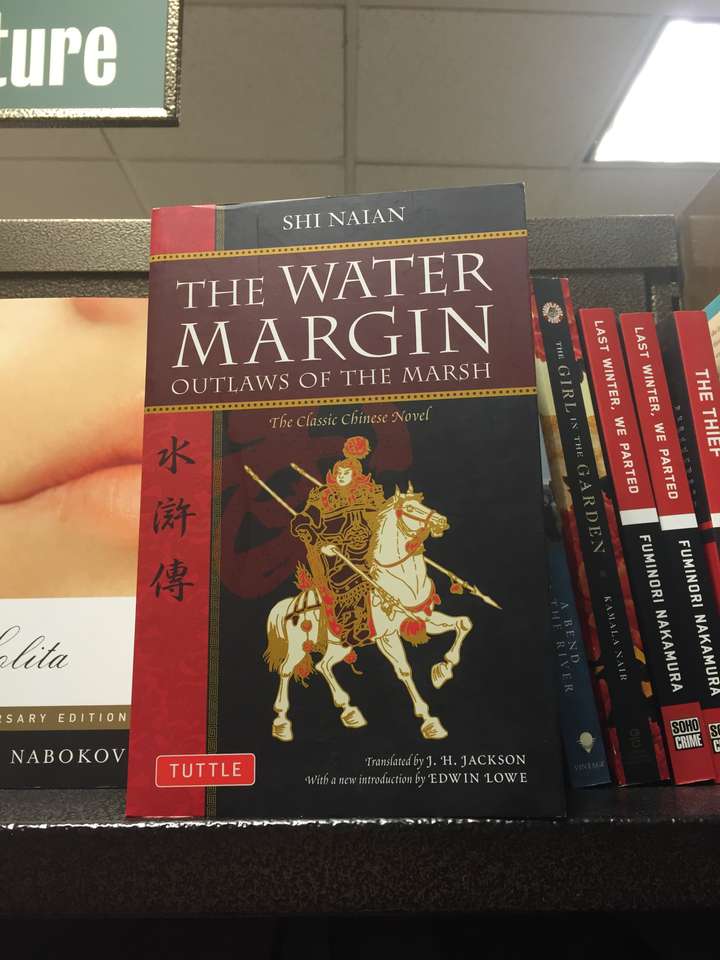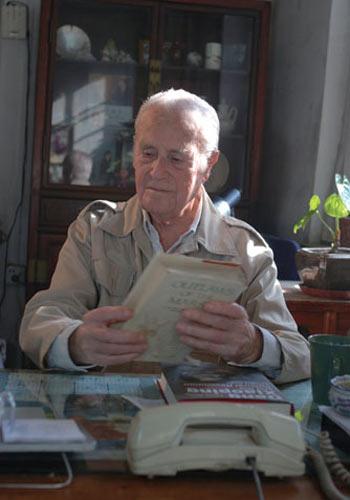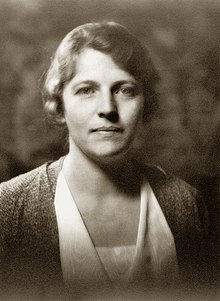《論語·顏淵》:“君子敬而無失,與人恭而有禮,四海之內,皆兄弟也。”
四海之內皆兄弟。對應英文:Within the four seas all men are brothers. xx
《水滸傳》的英譯本有四個版本,其中較受歡迎,影響較大的是美國女作家賽珍珠版本的
All Men Are Brothers
賽譯以直譯為主,盡可能保留了原作的風格和意義,甚至原封不動地保留了一些即使中文讀者也不是很感興趣的內容。




Pearl Sydenstricker Buck (June 26, 1892 – March 6, 1973; also known by her Chinese name Sai Zhenzhu; Chinese: 賽珍珠) was an American writer and novelist. As the daughter of missionaries, Buck spent most of her life before 1934 in Zhenjiang, China. Her novel The Good Earth was the best-selling fiction book in the United States in 1931 and 1932 and won the Pulitzer Prize in 1932. In 1938, she was awarded the Nobel Prize in Literature "for her rich and truly epic descriptions of peasant life in China and for her biographical masterpieces".[1] She was the first American woman to win the Nobel Prize for Literature.
After returning to the United States in 1935, she continued writing prolifically, became a prominent advocate of the rights of women and minority groups, and wrote widely on Chinese and Asian cultures, becoming particularly well known for her efforts on behalf of Asian and mixed-race adoption.
Originally named Comfort by her parents,[2] Pearl Sydenstricker was born in Hillsboro, West Virginia, to Caroline Maude (Stulting) (1857–1921) and Absalom Sydenstricker. Her parents, Southern Presbyterian missionaries, traveled to China soon after their marriage on July 8, 1880, but returned to the United States for Pearl's birth. When Pearl was five months old, the family arrived in China, first in Huai'an and then in 1896 moved to Zhenjiang (then often known as Jingjiang or, in the Chinese postal romanization system, Tsingkiang), near Nanking.[3]
Of her siblings who survived into adulthood, Edgar Sydenstricker had a distinguished career with the United States Public Health Service and later the Milbank Memorial Fundand Grace Sydenstricker Yaukey (1899–1994) was a writer who wrote young adult books and books about Asia under the pen name Cornelia Spencer.[4][5]
Pearl recalled in her memoir that she lived in "several worlds", one a "small, white, clean Presbyterian world of my parents", and the other the "big, loving merry not-too-clean Chinese world", and there was no communication between them.[6] The Boxer Uprising greatly affected the family; their Chinese friends deserted them, and Western visitors decreased. Her father, convinced that no Chinese could wish him harm, stayed behind as the rest of the family went to Shanghai for safety. A few years later, Pearl was enrolled in Miss Jewell's School there, and was dismayed at the racist attitudes of the other students, few of whom could speak any Chinese. Both of her parents felt strongly that Chinese were their equals (they forbade the use of the word heathen), and she was raised in a bilingual environment: tutored in English by her mother, in the local dialect by her Chinese playmates, and in classical Chinese by a Chinese scholar named Mr. Kung. She also read voraciously, especially, in spite of her father's disapproval, the novels of Charles Dickens, which she later said she read through once a year for the rest of her life.[7]
In 1911, Pearl left China to attend Randolph-Macon Woman's College in Lynchburg, Virginia, in the United States, graduating Phi Beta Kappa in 1914 and a member of Kappa Delta Sorority. Although she had not intended to return to China, much less become a missionary, she quickly applied to the Presbyterian Board when her father wrote that her mother was seriously ill. From 1914 to 1932, she served as a Presbyterian missionary, but her views later became highly controversial during the Fundamentalist–Modernist Controversy, leading to her resignation.[8]
Career in China[edit source]
In 1914, Pearl returned to China. She married an agricultural economist missionary, John Lossing Buck, on May 30, 1917, and they moved to Suzhou, Anhui Province, a small town on the Huai River (not to be confused with the better-known Suzhou in Jiangsu Province). This region she describes in her books The Good Earth and Sons.
From 1920 to 1933, the Bucks made their home in Nanjing, on the campus of the University of Nanking, where they both had teaching positions. She taught English literature at the private, church-run University of Nanking,[9] Ginling College and at the National Central University. In 1920, the Bucks had a daughter, Carol, afflicted with phenylketonuria. In 1921, Buck's mother died of a tropical disease, sprue, and shortly afterward her father moved in. In 1924, they left China for John Buck's year of sabbatical and returned to the United States for a short time, during which Pearl Buck earned her master's degree from Cornell University. In 1925, the Bucks adopted Janice (later surnamed Walsh). That autumn, they returned to China.[8]
The tragedies and dislocations that Buck suffered in the 1920s reached a climax in March 1927, during the "Nanking Incident". In a confused battle involving elements of Chiang Kai-shek's Nationalist troops, Communist forces, and assorted warlords, several Westerners were murdered. Since her father Absalom insisted, as he had in 1900 in the face of the Boxers, the family decided to stay in Nanjing until the battle reached the city. When violence broke out, a poor Chinese family invited them to hide in their hut while the family house was looted. The family spent a day terrified and in hiding, after which they were rescued by American gunboats. They traveled to Shanghai and then sailed to Japan, where they stayed for a year, after which they moved back to Nanjing. Buck later said that this year in Japan showed her that not all Japanese were militarists. When she returned from Japan in late 1927, Buck devoted herself in earnest to the vocation of writing. Friendly relations with prominent Chinese writers of the time, such as Xu Zhimoand Lin Yutang, encouraged her to think of herself as a professional writer. She wanted to fulfill the ambitions denied to her mother, but she also needed money to support herself if she left her marriage, which had become increasingly lonely, and since the mission board could not provide it, she also needed money for Carol's specialized care. Buck went once more to the States in 1929 to find long-term care for Carol, and while there, Richard J. Walsh, editor at John Day publishers in New York, accepted her novel East Wind: West Wind. She and Walsh began a relationship that would result in marriage and many years of professional teamwork. Back in Nanking, she retreated every morning to the attic of her university bungalow and within the year completed the manuscript for The Good Earth.[10]
When John Lossing Buck took the family to Ithaca the next year, Pearl accepted an invitation to address a luncheon of Presbyterian women at the Astor Hotel in New York City. Her talk was titled "Is There a Case for the Foreign Missionary?" and her answer was a barely qualified "no". She told her American audience that she welcomed Chinese to share her Christian faith, but argued that China did not need an institutional church dominated by missionaries who were too often ignorant of China and arrogant in their attempts to control it. When the talk was published in Harper's Magazine,[11] the scandalized reaction led Buck to resign her position with the Presbyterian Board. In 1934, Buck left China, believing she would return,[12] while John Lossing Buck remained.[13]
Career in the United States[edit source]
In 1935 the Bucks divorced in Reno, Nevada,[14] and she married Richard Walsh that same day.[12] He offered her advice and affection which, her biographer concludes, "helped make Pearl's prodigious activity possible". The couple lived in Pennsylvania until his death in 1960.[10]
During the Cultural Revolution, Buck, as a preeminent American writer of Chinese village life, was denounced as an "American cultural imperialist".[15] Buck was "heartbroken" when she was prevented from visiting China with Richard Nixon in 1972. Her 1962 novel Satan Never Sleeps described the Communist tyranny in China. Following the Communist Revolution in 1949, Buck was repeatedly refused all attempts to return to her beloved China and therefore was compelled to remain in the United States for the rest of her life.[12]
Pearl S. Buck died of lung cancer on March 6, 1973, in Danby, Vermont, and was interred in Green Hills Farm in Perkasie, Pennsylvania. She designed her own tombstone. Her name was not inscribed in English on her tombstone. Instead, the grave marker is inscribed with Chinese characters representing the name Pearl Sydenstricker.[16]
Nobel Prize in Literature[edit source]
In 1938 the Nobel Prize committee in awarding the prize said:
In her speech to the Academy, she took as her topic "The Chinese Novel." She explained, "I am an American by birth and by ancestry", but "my earliest knowledge of story, of how to tell and write stories, came to me in China." After an extensive discussion of classic Chinese novels, especially Romance of the Three Kingdoms, All Men Are Brothers, and Dream of the Red Chamber, she concluded that in China "the novelist did not have the task of creating art but of speaking to the people." Her own ambition, she continued, had not been trained toward "the beauty of letters or the grace of art." In China, the task of the novelist differed from the Western artist: "To farmers he must talk of their land, and to old men he must speak of peace, and to old women he must tell of their children, and to young men and women he must speak of each other." And like the Chinese novelist, she concluded, "I have been taught to want to write for these people. If they are reading their magazines by the million, then I want my stories there rather than in magazines read only by a few."[18]
------------
John Lossing Buck (1890–1975) was an American agricultural economist [1] specializing in the rural economy of China. He first went to China in 1915 as an agricultural missionary for the American Presbyterian Mission and was based in China until 1944. His wife, whom he later divorced, was Nobel Prize-winning author Pearl S. Buck (1892–1973).
American Southern Presbyterian Mission was an American Presbyterian missionary society of the Southern Presbyterian Church that was involved in sending workers to countries such as China during the late Qing Dynasty.[1]It was organized in 1862.
References[edit source]
- American Presbyterian Mission (1867). Memorials of Protestant Missionaries to the Chinese. Shanghai: American Presbyterian Mission Press.
The Presbyterian Church in the United States (PCUS, originally Presbyterian Church in the Confederate States of America) was a Protestant Christian denomination in the Southern and border states of the United States that existed from 1861 to 1983. That year it merged with the United Presbyterian Church in the United States of America (UPCUSA) to form the Presbyterian Church (USA).
----------
賽珍珠[1](英語:Pearl Sydenstricker Buck,直譯為“珀爾· 賽登斯特裏克·巴克”,1892年6月26日-1973年3月6日),美國旅華作家,曾憑借其小說《大地》(The Good Earth),於1932年獲得普利策小說獎,後在1938年獲得諾貝爾文學獎,也是獲得普利策獎和諾貝爾獎的第一位女作家,以及作品流傳語種最多的美國作家。
生平[編輯]
1880年美南長老會的傳教士賽兆祥攜新婚妻子卡羅琳來華,卡羅琳在中國共生了生了二女一男,都死於當時無法防治的“熱病”,於是在懷孕第四個的時候,被送回美國休養。1892年6月26日,賽珍珠出生在美國西弗吉尼亞州,起名為康福特(Comfort[2])。到中國以後,改名為珍珠(Pearl),“康福特”變為中間名。父母親在她出生3個月時一同來到中國江蘇清江浦(今淮安市主城區),後來搬到鎮江,住在潤州山長老會潤州中學的平房裏(此處故居已經拆除);在那裏長大成人,她是先學會漢語和習慣中國風俗(特別受益於其老師“孔先生”)後,她母親才教她英語。值得一提的是,從幼年起,她就在鼓勵中開始寫作。
1910年,賽珍珠離開中國,到美國弗吉尼亞州倫道夫·梅康女子學院學習。於1914年獲得了學位之後,她又回到中國,並且在1917年嫁紿了農業經濟學家約翰·洛辛·卜凱。隨後他們舉家移居到安徽北部的宿縣,在此期間的生活經曆成為後來聞名世界的《大地》的素材。在1921年底她的母親去世後,全家遷到南京,賽珍珠則在金陵大學(今南京大學部分)教授英語文學,並兼執教於南高、東大和中大時期南京大學英語係。1921年,他們有了女兒卡羅(Carol);不幸的是,這個女孩患有苯丙酮尿症。1925年,她收養了賈尼斯(Janice,後改姓Walsh),之後又接著收養了8個孩子。1926年,她小別中國,到美國的康乃爾大學攻讀藝術碩士學位。旋即回到中國南京。
1930年,賽珍珠出版了她的第一部作品《東風:西風》,從而開始了她的寫作事業。1931年,其著名小說《大地》問世,被後人認為是她最為傑出的作品之一。農民王龍的生活故事使她於1932年獲得了普利策獎。她的事業從此蒸蒸日上,並於1935年獲得了威廉·迪恩·豪威爾勳章。
然而,1934年中國政局陷入了混亂,賽珍珠被迫離開中國。她回到了美國,這時她的丈夫向她提出了離婚,她同意了。之後又嫁給了紐約出版商莊台公司(John Day Co.)的總裁理查德·J·華爾士,並且又收養了六個孩子。在完成了描寫其父母的作品《流亡》和《搏鬥的天使》之後,她於1938年獲得了諾貝爾文學獎。曾任美國作家協會主席。
在她的一生中,賽珍珠創作了超過100部文學作品,其中最著名的就是《大地》。她作品的題材包括小說,短篇故事,劇本和兒童故事。她的作品和生活有著緊密的聯係。她試圖向她的讀者證明:隻要願意接受,人類是存在著廣泛的共同性的。她的作品主題涵養了女性、情感(廣義的)、亞洲、移民、領養和人生際遇。
1973年3月6日,賽珍珠在佛蒙特州的丹比逝世,葬於賓西法尼亞州普凱西的綠山農場[3]。
與中國的關係[編輯]
賽珍珠生前曾經多次出入中國教書,並對當地民風和各大事件留下深厚的感情,也因此將之融入到了往後的許多作品當中。
1937年抗日戰爭爆發後,為中國人民的反侵略戰爭奔走。許許多多美國人正是通過賽珍珠的小說了解到中國,為中國人民的抗日戰爭解囊相助。
她出生在基督傳教士家庭,但卻反對傳教。在中國、美國許多地方,她公開聲稱她極為討厭那些“喋喋不休的布道”,說傳教士布道隻會“扼殺思想,蠱惑人心,在中國教會裏製造出一批偽君子”。
賽珍珠有許多中國好友,包括徐誌摩、林語堂、胡適等人。賽珍珠邀請林語堂在美國發表作品,後來林的《吾國與吾民》在美國一炮而紅。林語堂因發明中文打字機破產,曾向賽珍珠借錢遭到拒絕,兩人在美國打起出版官司,最後形同陌路。1954年10月,林語堂出任新加坡南洋大學校長前夕,曾打電報向賽珍珠報告,賽珍珠沒回電報。林語堂說一句話:“我看穿了一個美國人!”[4]
她因批評蔣介石獨裁,國民政府拒絕參加她的諾貝爾文學獎領獎儀式。
她曾經同情中共,讚許毛澤東。認為當時的中共,是“完全為老百姓的事業著想”。由於她同情中國革命,在二戰結束後,賽珍珠因“親共”而上了中央情報局的黑名單,被懷疑是共產黨,黑檔案長達300頁[5]。
由於她對中華人民共和國成立後中共部分做法的批評立場[5],中華人民共和國政府成立後,她的作品在中國大陸長期被打壓,大陸文化界攻擊她是“美國反動文人”和“美帝國主義文化侵略的急先鋒”。[6][7]1972年美國總統尼克鬆訪華兩個月後,賽珍珠也向新聞媒體宣布自己即將訪華,但隨後因為江青(當年藍蘋同王瑩爭演《賽金花》的主角失敗,賽珍珠對王瑩捧場[8])的阻攔,遭到中華人民共和國政府拒絕。
在中國江西九江廬山、江蘇鎮江、安徽宿州、南京大學,至今保存著當年賽珍珠生活過的故居。
1990年代晚期,中美兩國展開了一係列圍繞賽珍珠的文化交流。2001年羅燕改編賽珍珠小說《群芳庭》並自己擔任女主角,由好萊塢環球電影公司和北京電影製片廠聯合攝製的電影《庭院裏的女人》在中國和美國同時公演。
賽珍珠的英譯《水滸傳》
賽珍珠(Pearl Buck)是第一個因描寫中國而獲得諾貝爾文學獎的西方作家(1938年),她對於中國文學特別是中國小說十分推崇。在所有的中國古典小說中,賽珍珠最喜愛、最崇拜的是《水滸傳》。從1927到1932年,她用了整整四年的時間翻譯了《水滸傳》(七十一回本)全文,這是最早的英語全譯本。該譯本於1933年在美國紐約和英國倫敦同時出版,改書名為《四海之內皆兄弟》(All Men Are Brothers),在歐美風靡一時。後來於1937、1948、1957年在英美再版,有些國家還據賽珍珠譯本轉譯成其他文本。
賽珍珠的翻譯是《水滸傳》最早的英語全譯本,但這不是說,這一譯本是原文一字不落的翻譯。在翻譯的過程中,賽珍珠省略了不少內容,最明顯的是,原書的七十一回到譯本中隻有七十回。究其原因,在於譯者將原書的第一回《張天師祈禳瘟疫,洪太尉誤走妖魔》並入了《引首》,譯文的第一回從《王教頭私走延安府,九紋龍大鬧史家村》開始。這樣刪節合並也有一定的道理,因為正是從這一回開始才真正進入小說的正題。此外,譯本中將原作中絕大部分詩詞刪去未譯,那些描寫人物外貌、打鬥場麵、山川景物以及日常用品等的詩詞歌賦雖然生動、形象,但對於譯者來說卻是不小的難題。當然這並不是說賽珍珠沒有能力翻譯這些內容,如原作《引首》開篇的詩詞以及著名的“九裏山前作戰場,牧童拾得舊刀槍;順風吹動烏江水,好似虞姬別霸王”一詩都得到了很忠實的翻譯。賽珍珠表示,她翻譯《水滸傳》不是出於學術的目的,而“隻是覺得它是一個講的很好的故事”(英文本序言第5頁)。從譯文的效果來看,不翻譯那些時常打斷小說敘事的詩文反而有利於故事情節發展的流暢性。同時,與故事情節發展密切相關的詩詞賽珍珠全部予以翻譯。
除了這些刪節之外,賽珍珠的譯本基本上可以說是逐字逐句的翻譯。賽珍珠在《序言》中表達過這樣的雄心:“我盡可能地直譯,因為中文原文的風格與它的題材是非常一致的,我的工作隻是使譯文盡可能像原文,使不懂原文的讀者仿佛是在讀原文。原文中不精彩的地方,我的譯文也不增添。”我們知道,賽珍珠是著名的作家,在翻譯這本書的同時還在進行創作,而且她的代表作《大地》(The Good Earth)已在譯本完成之前出版並為她贏得了極大的聲譽。對一個不僅能翻譯,也能創作的譯者來說,遇到對原作不滿意的地方時往往會技癢,會情不自禁地加上幾筆,晚清翻譯家林紓就是一個典型的例子(參閱錢鍾書《七綴集·林紓的翻譯》)。但賽珍珠忍住了沒有這麽做,她的翻譯是相當忠實於原文的,有時甚至過於拘泥於原文,如:To extricate yourself from a difficulty there are thirty-six ways but the best of them all is to run away.(三十六計,走為上策)。至於一百零八將的諢號,賽珍珠也采取了同樣的翻譯方法:The Opportune Rain(及時雨);The Leopard Headed(豹子頭);The Fire In The Thunder Clap(霹靂火);He Whom No Obstacle Can Stay(沒遮攔);White Stripe In The Waves (浪裏白條);Flea On A Drum(鼓上蚤)。
總的來看,賽珍珠的《水滸傳》譯本是質量上乘的,這除了她本人對於中、英兩種語言的把握之外,也與她的中國友人的幫助分不開。龍墨鄉先生在翻譯過程中向賽珍珠提供了許多有益的建議,包括解釋小說中出現的中國的風俗習慣、武器以及當時已經不再使用的語匯。除此之外,他們還有更為有趣的合作方式:“首先我獨自重讀了這本小說,然後龍先生大聲地讀給我聽,我一邊聽,一邊盡可能準確地翻譯,一句接一句,我發現這種他一邊讀我一邊翻的方式比我獨自翻譯要快,同時我也把一冊《水滸傳》放在旁邊,以備參考。翻譯完成以後,我和龍先生一起將整個書過一遍,將翻譯和原文一字一句地對照。”(英文本序言第9頁)這種翻譯方式讓我們很容易想到林紓和他的合作者,但更靠近的例子似乎應該是英國漢學家理雅各(James Legge)和晚清文人王韜合作翻譯儒家經典。雖然我們不是十分清楚理雅各和王韜合作的具體細節,但是一個熟悉中外語言的外國人與一個精通中文的中國人一起來翻譯中國的著作無疑是相當理想的合作模式。正因為如此,賽譯《水滸傳》取得了令人滿意的結果。
胡適曾將中國古代小說分為兩種,一種是“由曆史逐漸演變出來的小說”,另一種是由某一作家“創造的小說”。前者如《水滸傳》,後者如《紅樓夢》。關於前者他寫過著名的論文《水滸傳考證》,此文的方法正如他後來指出的那樣,是“用曆史演進法去搜集它們早期的各種版本,來找出它們如何由一些樸素的原始故事逐漸演變成為後來的文學名著”。(《胡適口述自傳》,台北傳記文學出版社1981年,P194)他用同樣的方法考察了李宸妃的故事在宋元明清的流變後,提出了著名的“滾雪球”理論:“我們看這一個故事在九百年中變遷沿革的曆史,可以得一個很好的教訓。傳說的生長,就同滾雪球一樣,越滾越大,最初隻有一個簡單的故事作個中心的‘母題’(Motif),你添一枝,他添一葉,便象個樣子了。後來經過眾口的傳說,經過平話家的敷衍,經過戲曲家的剪裁結構,經過小說家的修飾,這個故事便一天天的改變麵目:內容更豐富了,情節更精細圓滿了,曲折更多了,人物更有生氣了。”(《胡適古典文學研究論集》,上海古籍出版社 1988年,P1193)賽珍珠對此也有很深刻的認識,她在《譯序》中說,“《水滸》成長為現在這個樣子的過程是一個非常有趣的故事,像很多中國小說一樣,它是逐漸發展而來而不是寫出來的,直到今天到底誰是它的作者還不知道。”在後來的《中國小說》(The Chinese Novel,1939)一文中,她更進一步地提出了“人民創造了小說”的見解,與胡適的觀點相視而笑,甚至可以說歸納得更為深刻。
正因為“水滸故事”是逐漸豐富發展的,所以版本情況十分複雜,今知有7種不同回數的版本,而從文字的詳略、描寫的細密來分,又有繁本和簡本之別。賽珍珠選擇七十一回本,並不是因為這是最短的版本,而是她認為七十一回本代表了《水滸》的真精神:“這些章節都是一個人寫的,其他版本中後麵的章節是別人增加的,主要是寫他們的失敗和被官府抓住的情形,目的顯然是為了將這部小說從革命文學中剔除出去,並用一個符合統治階級的意思來結束全書。”她認為這樣的版本失去了七十一回本“主題和風格所表現的精神和活力”。(英文本序言第7頁)賽氏的看法無疑是很有見地的,胡適在1920年頃建議亞東圖書館出版新式標點符號本古典小說時推薦的也正是七十一回本。
選擇七十一回本固然大有道理,但賽珍珠似乎沒有意識到一個無法回避的尖銳問題:水滸英雄並不是徹底的革命者,正如魯迅所指出的那樣,“一部《水滸》,說得很分明:因為不反對天子,所以大軍一到,便受招安,替國家打別的強盜——不‘替天行道’的強盜去了。終於是奴才”。(《魯迅全集》第4卷,人民文學出版社1981年,P155)好漢們奴性的暴露固然主要是在七十一回之後,但七十一回之前並非沒有露出端倪,七十一回並不是好漢們轉變的分水嶺。選擇這個版本可以找到更為堅實的理由:相比後麵的章節,這部分情節緊湊、精彩,文筆優美,是精華所在。
賽珍珠對小說中的英雄的理解還有一個偏差。她將英文譯本的題目改為“四海之內皆兄弟”,也是有問題的。魯迅在1933年3月24日致姚克的信中提到賽珍珠的該譯本:“近布克夫人(按即賽珍珠)譯《水滸》,聞頗好。”但對她改換題目表示了不滿:“因為山泊中人,是並不將一切人們都作兄弟看的。”(《魯迅全集》第12卷,P72)賽珍珠在多年以後承認了自己的錯誤,並聲稱當初“不該勉強地答應”出版商的要求而改換題目。但在當時她為自己的做法極力辯護:“英文標題不是中文標題的翻譯,它是無法翻譯的,Shui的意思是‘水’,Hu的意思是‘邊緣或邊界’,Chuan對應於英文的‘小說’一詞。將這幾個字並列起來在英文裏幾乎是沒有意義的,至少在我看來,它會導致讀者對本書產生有問題的看法。所以我自以為是地選擇了孔子的一句話作為英文標題,這個題目無論從廣度上還是從含義上都表達了這幫正義的強盜的精神。”(英文本序言第5-6頁)另外,我們還可以為賽珍珠再找一條理由:《水滸》中的人物也多次使用這句話,如原作第二回中陳達和第四回中趙員外。在翻譯《水滸傳》的四年中,賽珍珠試用過的書名有《俠盜》、《義俠》等,出版前沒多久才根據出版商的要求定下《四海之內皆兄弟》的題目。
作者單位:北京外國語大學海外漢學研究中心
------------

The Water Margin J.H.Jackson 版

沙博理,1915年12月生於美國紐約,1937年於聖約翰大學法律係畢業後擔任律師。第二次世界大戰期間,他應征入伍。之後進入耶魯大學學習中文。中國燦爛的古代文化和充滿創造精神的漫長曆史吸引了他,他告別了母親和祖國,用退伍費買了前往中國的船票,於1947年4月遠涉重洋來到中國上海。
新中國最初並沒有律師職業,閑不住的沙博理開始嚐試著接觸新的領域。幾十年來,他一直筆耕不輟。作為新中國文學西播的前驅,沙博理翻譯了二十餘種中國現當代文學作品。20世紀70年代,他開始著手翻譯中國古典名著《水滸傳》,並贏得中國文聯最高翻譯獎,使中國的文化經脈在國外的土壤中繼續延伸。
如今,94歲的沙博理是全國政協年級最長的委員,中國著名的翻譯家,因將《水滸傳》譯成英語而贏得過中國文聯頒發的最高翻譯獎。沙博理先生同時也是對外交流家,在新中國成立之後,把自己的一切貢獻給新中國的建設,加入了中國國籍,與他的祖國同喜同悲。







